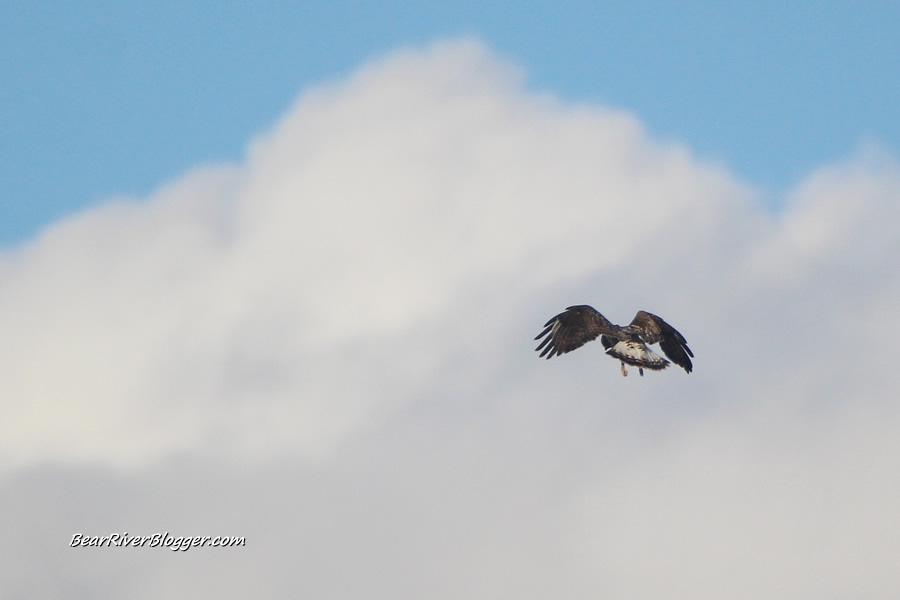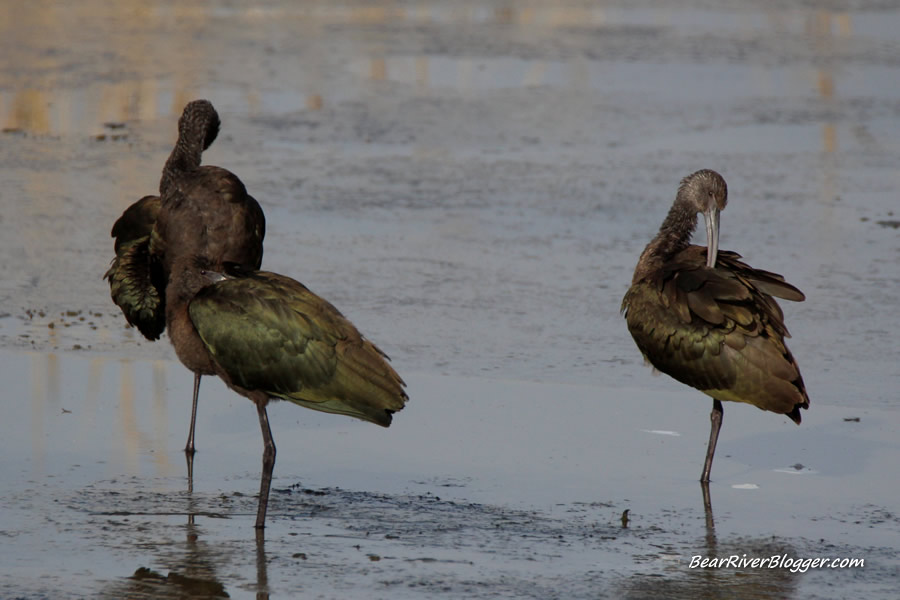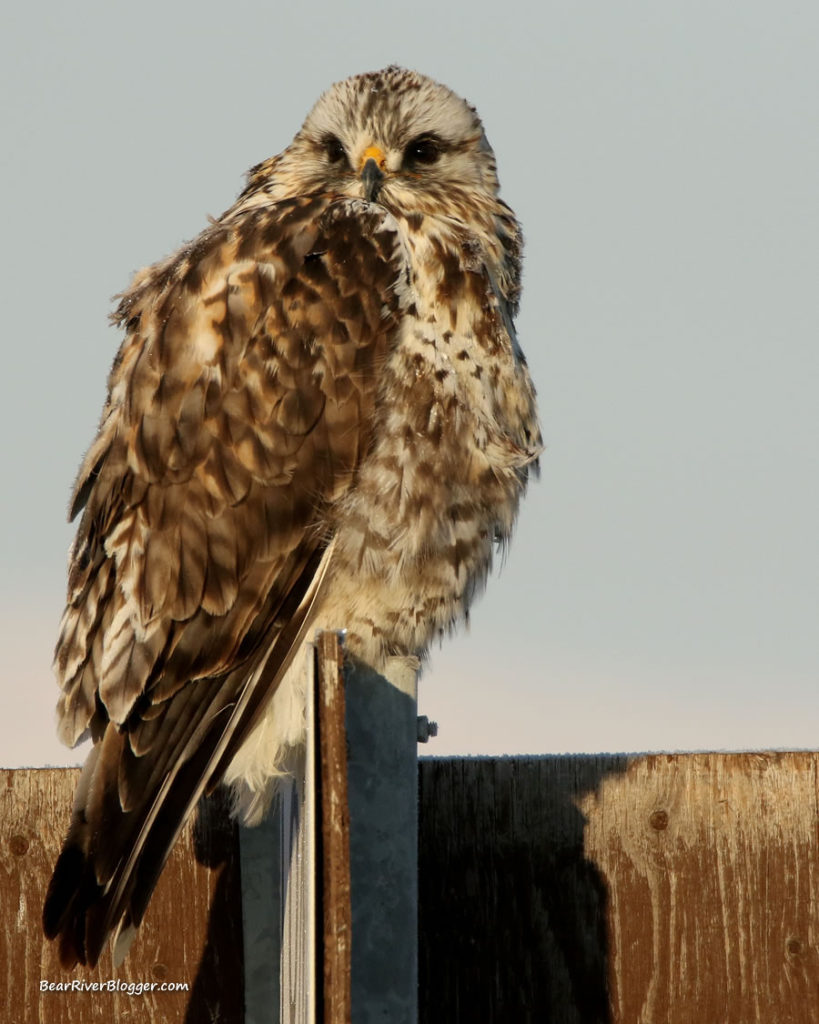This has been one of the strangest years when it comes to bird watching that I can ever recall.
It started off with an American white pelican landing right in front of me on an almost completely frozen over Farmington Bay WMA during the last week of January, several months before they typically arrive, and it hasn’t slowed down since.
This past week, both on Farmington Bay and the Bear River Migratory Bird Refuge, I am still seeing some late-season oddities with regards to bird watching.
The most prominent, of course, are the 100 or so trumpeter swans I came across yesterday in the small town of Corinne.
But prior to that, a solitary long-billed curlew grabbed my attention last week as I was heading down to the Bear River Migratory Bird Refuge auto tour route to check on the migrating tundra swans.
Late November is definitely not time of year to expect to see long-billed curlews on the Bear River Refuge, but I did happen across one on the alkaline mudflats on Forest Street.

The mudflats on Forest street are one of the best locations to find the long-billed curlew here in Utah during the summer months but not a common place for these odd-looking birds during the week of Thanksgiving, that’s for sure.
Another rarity this time of year is the several great egrets I have been viewing on the Bear River itself, also on Forest Street on the way down to the refuge auto tour loop.
I have seen at least 5 late-season great egrets in the past 2 weeks, with one just a couple of days ago on the refuge.

The great egret is similar to the great blue heron, both stalking fish and small water-borne creatures in the shallows, but great egrets typically migrate each fall so it is quite unusual to see so many this late in the season.
I have been seeing a lot more great egrets this summer than I ever have and more than I usually do on the Bear River Migratory Bird Refuge.
But, all in all, Farmington Bay has been the best place this summer to view and photograph the great egret, at least in my opinion, that is.
There it seemed all summer long I never went a day without seeing at least a couple great egrets stalking the shallows along the main entrance road.
Now for those of you that reside here in northern Utah, you are well aware of the freezing nighttime temperatures that have been showing up the past couple of weeks.
This sub-freezing trend we are in has, in fact, started to freeze some of the wetlands along the Wasatch Front, meaning many warm-weather birds should be gone already.
But just a few days ago, I came across a dozen white-faced ibis at Farmington Bay WMA, standing in partially frozen waters.

Now when I think of summer and warm temperatures, the white-faced ibis always comes to mind.
It’s a bird that fills the Bear River Migratory Bird Refuge wetlands during the summer and the autumn-scented skies during early fall as they migrate out for a warmer winter climate.
Besides the January pelican sighting, this is one of the most unusual bird sightings I have seen in years.
I thought I would never see white-faced ibis standing in partially frozen water like did last week but as I said before, this has been a very strange year for bird watching.
The only thing stranger in my mind was a couple years ago I spotted a late-season flock of American avocets on the Bear River Migratory Bird Refuge auto tour route just days before Christmas during an arctic blast where the refuge froze solid in one night, leaving these late-migrants in the wrong place at the wrong time.
But these strange and rare oddities in bird watching are what keep me coming back, year after year, to view, photograph, blog about, and just downright enjoy birds doing the unexpected.
Anyways, I hope all of you are getting out and enjoying some bird watching this fall and upcoming winter.
The deepest, darkest parts of winter on the Bear River Migratory Bird Refuge is one of the best times to go bird watching, in fact, particularly December and January when winter is at its worst.
The birds are few and the temperatures are oftentimes frigid, but the experiences out on a solitary and solemn winter wonderland like the refuge auto tour loop are what I would call priceless.
Rough-legged hawks are showing up for the winter birding season and bald eagles are also starting to appear near the refuge.

And for the past few years, a small flock of tundra swans has been remaining on the Bear River Migratory Bird Refuge all winter long, curtailing the desire to migrate to northern California and staying put here till their counterparts return in late February and March, two of the best months to view tundra swans on the Bear River Migratory Bird Refuge by the way.
Get out and enjoy birds and the wonders, not to mention the rarities, of migration, is all I have to say.
If you are one that loves birds and birding, I offer you to head on over to my subscribe page and sign up for email notifications for future blog posts.
I also hope you will continue to support this website by sharing it on your favorite social media outlets.
I appreciate your readership and support and look forward to sharing more of what makes me tick, getting out and enjoying nature no matter where I am at or what I am doing.
Birding Apparel
“Let’s Go Bird Watching-Yellow Headed Blackbird” hooded sweatshirt is currently 25% off for a limited time.
For the full line of our offerings, visit our online store for more apparel and gifts for the birder or nature lover on your shopping list.






